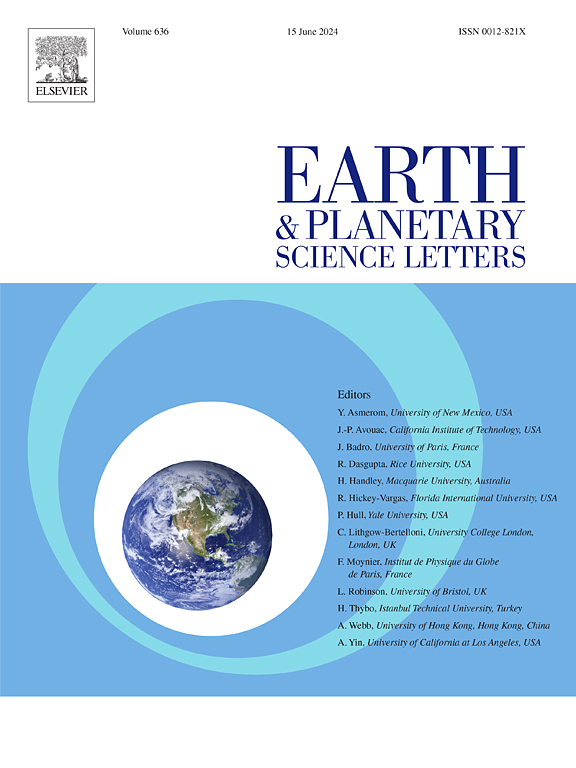Dislocation networks facilitate element diffusion in deformed garnet
IF 4.8
1区 地球科学
Q1 GEOCHEMISTRY & GEOPHYSICS
引用次数: 0
Abstract
Garnet is a key mineral in constraining the conditions and timing of metamorphism. Changes in its elemental composition can record distinct pressure (P) and temperature (T) conditions, and information on timing can be retained by its isotopic systems. Due to its mostly rigid behavior during deformation and high closure temperature for Lu–Hf diffusion, garnet geochemistry is interpreted to reflect garnet growth undisturbed by subsequent ductile deformation. However, nanoscale observations demonstrated element mobility into intracrystalline defects and suggested that garnet may not be as geochemically robust as commonly thought. Here, we assess the efficiency of dislocations in promoting grain-scale element mobility in garnet porphyroclasts naturally deformed under high-T conditions using a range of high-spatial resolution microstructural and chemical-isotopic techniques. We show that the development of low-angle subgrain boundaries in response to dislocation creep is insufficient to promote grain-scale element mobility. However, we find that Ca, Mg and trace elements (e.g., La, Ce, Lu, Hf, Sm, Ti, Zr and U) are mobilised on the grain-scale when the dislocation density exceeds the threshold to form a dislocation network. Although dislocation networks can enhance element mobility, the differences in P–T conditions from ‘low’- and ‘high-strain’ domains are negligible and unresolvable, reinforcing its geochemical robustness to estimate the prograde garnet growth conditions. Nevertheless, dislocation networks facilitate syn-kinematic diffusional Hf loss and Lu gain, demonstrating that garnet intracrystalline deformation can impact the Lu–Hf geochronometer. These observations indicate that isotopic resetting in garnet is more complex than previously assumed in rocks that underwent high-strain and temperature deformation.
求助全文
约1分钟内获得全文
求助全文
来源期刊

Earth and Planetary Science Letters
地学-地球化学与地球物理
CiteScore
10.30
自引率
5.70%
发文量
475
审稿时长
2.8 months
期刊介绍:
Earth and Planetary Science Letters (EPSL) is a leading journal for researchers across the entire Earth and planetary sciences community. It publishes concise, exciting, high-impact articles ("Letters") of broad interest. Its focus is on physical and chemical processes, the evolution and general properties of the Earth and planets - from their deep interiors to their atmospheres. EPSL also includes a Frontiers section, featuring invited high-profile synthesis articles by leading experts on timely topics to bring cutting-edge research to the wider community.
 求助内容:
求助内容: 应助结果提醒方式:
应助结果提醒方式:


